South America is a continent of staggering contrasts—a place where ancient civilizations meet futuristic cities, where the Amazon Rainforest stretches beyond the horizon, and where snow-capped mountains rise from coastal deserts. For travelers seeking depth, diversity, and discovery, this continent offers experiences that are as rich in culture as they are in natural beauty.
From Colombia’s vibrant coastlines to Chile’s glacial fjords, each destination presents a compelling case for exploration. This guide highlights seven of the top countries to visit in South America, each selected for its unique landscapes, cultural treasures, and unforgettable adventures. Whether you’re drawn by history, nature, cuisine, or city life, South America’s charm lies in its ability to surprise at every turn.
In the following sections, we’ll journey through the very best of this continent—from world-renowned icons like Machu Picchu and Iguazu Falls to hidden gems that redefine wanderlust. Get ready to discover the top countries to visit in South America, one unforgettable stop at a time.
Table of Contents
1. Colombia: A Vibrant Blend of Culture and Nature
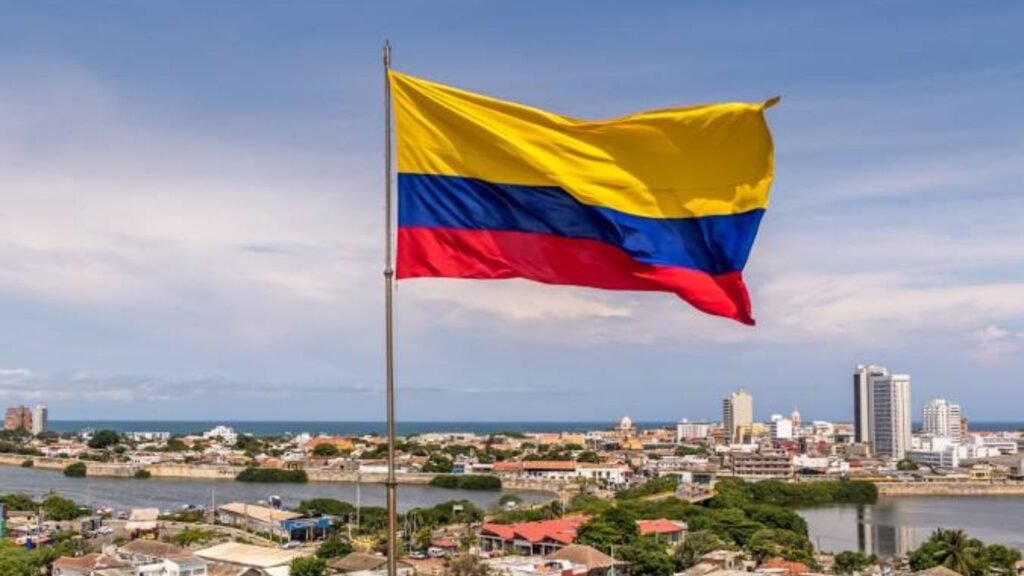
Colombia is one of the most dynamic and diverse nations among the top countries to visit in South America. It’s a place where Caribbean beaches, Andean peaks, Amazonian jungles, and colonial cities all coexist in a symphony of color, rhythm, and flavor. Colombia has emerged from a turbulent past to become a traveler’s paradise—offering both soulful authenticity and world-class hospitality.
Exploring Bogotá’s Historic Charm
Bogotá, the capital, is an urban sprawl nestled high in the Andes at over 2,600 meters above sea level. Yet despite its size, it maintains a surprising sense of intimacy—especially in La Candelaria, the historic center. Here, cobbled streets and brightly painted façades frame colonial churches, trendy cafes, and political murals that tell the story of Colombia’s complex identity.
The Gold Museum, a national treasure, houses over 55,000 pre-Hispanic gold artifacts, offering insight into the region’s indigenous civilizations. For panoramic views of the sprawling city, take the cable car up Monserrate, where the sunset paints the capital in hues of gold and amber.
The Coffee Region’s Scenic Beauty
No visit to Colombia would be complete without experiencing the Coffee Cultural Landscape, a UNESCO World Heritage Site nestled in the heart of the Andes. The regions of Quindío, Caldas, and Risaralda offer the perfect blend of natural beauty and agricultural tradition.
Visitors can stay in traditional fincas, walk through lush plantations, and learn about the centuries-old process of cultivating Colombia’s famed Arabica beans. The small town of Salento, with its colonial architecture and proximity to the towering wax palms of the Cocora Valley, is a scenic highlight that combines adventure with tranquility.
Cartagena’s Coastal Splendor
On Colombia’s Caribbean coast lies Cartagena de Indias, a city of romance, resilience, and radiant color. Encased within fortified walls built to fend off pirates, Cartagena’s old town is a perfectly preserved snapshot of Spanish colonial glory. Flower-draped balconies, horse-drawn carriages, and cobblestone alleys lead to sunlit plazas where live music and laughter echo into the night.
Beyond the walls, Cartagena serves as a gateway to the Rosario Islands, an idyllic archipelago perfect for snorkeling, sunbathing, and escaping the buzz of the city. This blend of history and beach life makes Colombia an essential stop among the top countries to visit in South America.
2. Ecuador: A Land of Diverse Landscapes

Compact in size but monumental in variety, Ecuador easily earns its place among the top countries to visit in South America. Few destinations offer such stark geographic contrasts within such a small area: Amazonian rainforest, Andean peaks, colonial cities, and otherworldly islands all await travelers eager for authentic experiences and ecological marvels.
The Enchanting Galápagos Islands
Roughly 1,000 kilometers off Ecuador’s coast lie the legendary Galápagos Islands—an isolated archipelago that redefined science and travel alike. Charles Darwin’s observations here formed the backbone of his theory of evolution, and today, visitors are still struck by the raw, almost prehistoric atmosphere of the islands.
The Galápagos remain a global model for sustainable tourism. Strict regulations ensure minimal impact on the ecosystems, allowing close encounters with marine iguanas, giant tortoises, blue-footed boobies, and playful sea lions. Snorkeling through coral reefs or kayaking alongside volcanic coastlines makes it one of the most unforgettable stops in any South American journey.
Quito’s Colonial Heritage
As one of the highest capital cities in the world, Quito dazzles at 2,850 meters above sea level with its stunning views and deep historical roots. Its historic center, a UNESCO World Heritage site, is a treasure trove of 16th-century architecture, baroque churches, and charming plazas.
The Church of San Francisco, with its elaborate altars and ancient cloisters, stands as a testament to Quito’s religious and colonial past. Just a short drive north is the Mitad del Mundo (Middle of the World), where you can straddle the equator—a uniquely Ecuadorian experience that underscores the country’s geographic significance.
The Andean Highlands
Ecuador’s Andean Highlands stretch like a scenic spine through the country, offering dramatic landscapes and cultural depth. The famous Avenue of the Volcanoes is home to towering peaks like Cotopaxi and Chimborazo, the latter being the closest point on Earth to the sun due to its equatorial position.
Villages like Otavalo, known for its vibrant market and indigenous Kichwa culture, provide a personal look at Ecuadorian traditions. Adventure seekers can hike, horseback ride, or mountain bike through cloud forests and high-altitude valleys—all within a few hours of the capital.
From its unique biodiversity to its heritage-rich cities, Ecuador is undeniably one of the top countries to visit in South America, offering far more than its modest size might suggest.
3. Peru: Ancient Civilizations and Modern Wonders
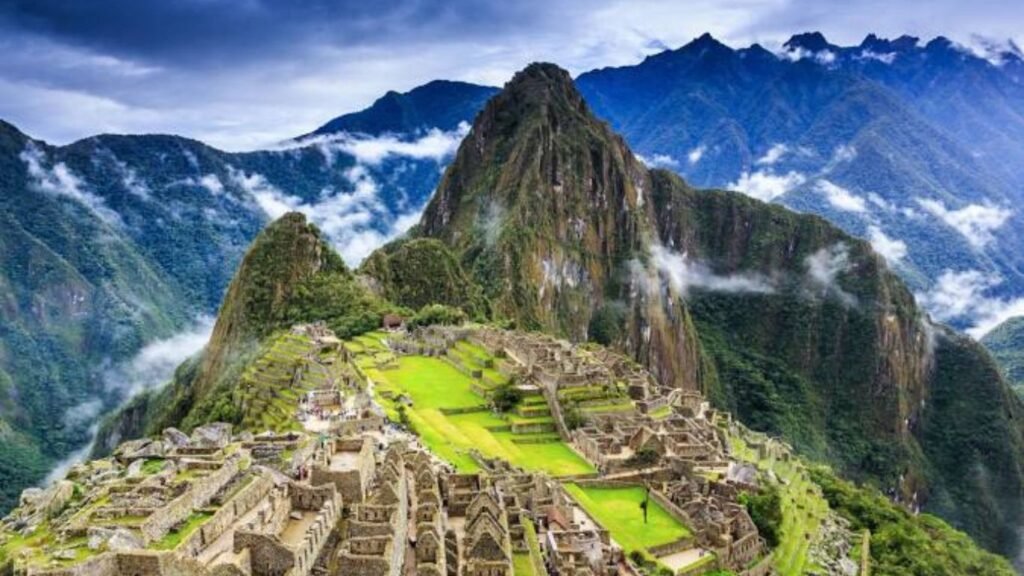
Peru’s mystique runs deep. As the cradle of the mighty Inca Empire and a modern hub of culinary innovation, Peru seamlessly blends its past with the present. It stands firmly among the top countries to visit in South America, offering travelers a rich narrative of archaeological marvels, vibrant cities, and highland cultures that remain fiercely alive.
Machu Picchu’s Mystical Majesty
Tucked high in the cloud-kissed Andes, Machu Picchu is perhaps South America’s most iconic archaeological wonder. This 15th-century Incan citadel, lost to the outside world until 1911, continues to inspire awe with its immaculate stonework and panoramic views. Reaching it via the legendary Inca Trail or the scenic train from Cusco, travelers step into a landscape where nature and ancient engineering coexist in majestic harmony.
For many, the visit to Machu Picchu is transformative—a spiritual experience underscored by the mountain mists and the sacred silence that lingers over the ruins. It’s a destination that defines Peru’s place among the top countries to visit in South America.
Lima’s Culinary Delights
Peru’s capital, Lima, has carved out a name for itself as Latin America’s culinary crown jewel. Its coastal location and fusion of indigenous, Spanish, African, and Asian influences have birthed a gastronomic scene that is as exciting as it is diverse.
In districts like Miraflores and Barranco, you’ll find world-renowned restaurants such as Central, Maido, and Astrid y Gastón, all celebrating Peru’s native ingredients in new and creative ways. Staples like ceviche, anticuchos, and ají de gallina are more than meals—they’re expressions of cultural pride. Dining in Lima is not just a pleasure; it’s an immersion into one of the many reasons Peru ranks high among the top countries to visit in South America.
The Sacred Valley’s Rich History
The Sacred Valley, nestled between Cusco and Machu Picchu, is a fertile stretch of land dotted with ruins, markets, and Andean villages. Once the agricultural hub of the Inca Empire, it remains a timeless corridor of history and heritage.
The ruins of Ollantaytambo showcase impressive stonework and defensive terraces, while Pisac offers both breathtaking archaeological sites and a vibrant market filled with handwoven textiles and traditional crafts. Here, traditions are passed down through generations, and the rhythm of rural life continues undisturbed. The Sacred Valley isn’t just a waypoint—it’s an essential piece of the cultural mosaic that makes Peru one of the top countries to visit in South America.
4. Bolivia: A High-Altitude Adventure
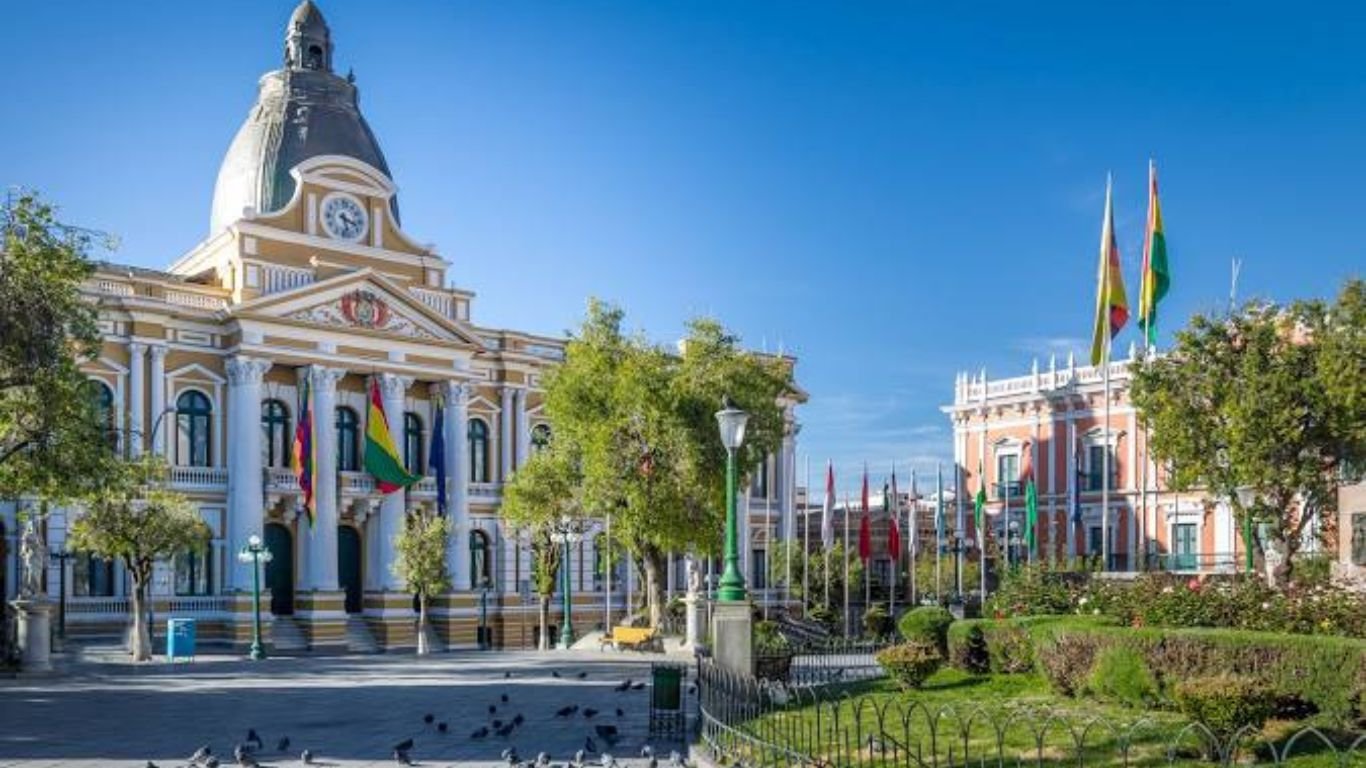
Bolivia is where the surreal becomes tangible. With its extreme altitudes, dreamlike landscapes, and deeply rooted indigenous cultures, it offers a raw, unfiltered travel experience. Often overlooked, Bolivia stands tall—both literally and figuratively—among the top countries to visit in South America, especially for adventurers seeking the unexpected.
The Surreal Salar de Uyuni
Stretching over 10,000 square kilometers, the Salar de Uyuni is the world’s largest salt flat—and easily one of the most jaw-dropping natural wonders on the continent. In the dry season, its vast white surface shimmers under an endless sky. In the rainy season, it becomes a mirror of the heavens, creating optical illusions that feel like walking on clouds.
Tours from the town of Uyuni often include eerie sights like the Train Graveyard, the cactus-dotted Incahuasi Island, and salt hotels constructed entirely from sodium chloride blocks. This otherworldly landscape secures Bolivia’s place among the top countries to visit in South America for those in search of the surreal.
La Paz’s Unique Urban Landscape
Perched in a bowl-shaped valley at over 3,600 meters above sea level, La Paz is the world’s highest administrative capital. It’s chaotic, colorful, and unapologetically bold—a city that defies gravity in more ways than one. What truly sets it apart is the Mi Teleférico, an aerial cable car system that floats above the city, offering travelers breathtaking views of the Andean skyline and the towering Illimani mountain.
Markets like the Mercado de las Brujas (Witches’ Market) immerse visitors in Bolivian mysticism, with potions, herbs, and talismans steeped in Aymara spiritual traditions. This energetic, culture-rich metropolis affirms Bolivia’s place among the top countries to visit in South America for curious souls willing to explore off the beaten path.
Lake Titicaca’s Tranquil Beauty
Shared by Peru and Bolivia, Lake Titicaca is the highest navigable lake in the world and a sacred site in Inca mythology. On the Bolivian side, the Isla del Sol (Island of the Sun) beckons with terraced hills, ancient ruins, and sweeping views over deep blue waters.
Hiking the island’s trails is like stepping through time. Locals still farm the land and tell stories of Viracocha—the Inca creator god—believed to have emerged from the lake. For those in search of serenity, cultural connection, and stunning landscapes, Lake Titicaca makes Bolivia one of the most enriching top countries to visit in South America.
5. Brazil: A Nation of Festivities and Natural Wonders
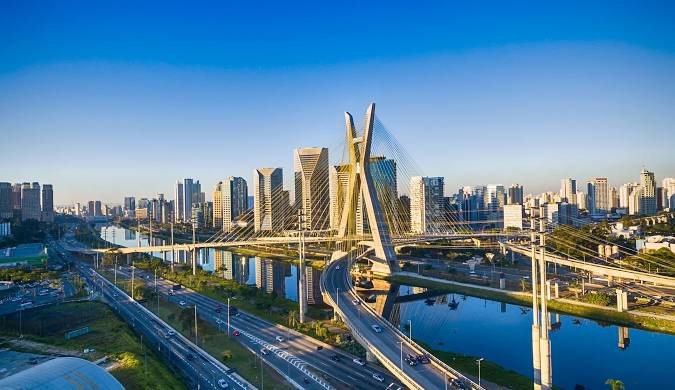
Brazil is vast, bold, and utterly unforgettable. As the largest country in South America, it dazzles with superlatives—home to the world’s largest rainforest, most celebrated carnival, and one of the most iconic urban skylines. With its unmatched variety of experiences, Brazil more than earns its place among the top countries to visit in South America.
Rio de Janeiro’s Iconic Sights
Few cities can compete with the drama and allure of Rio de Janeiro. Nestled between ocean and mountain, Rio pulses with energy—from samba rhythms echoing through the favelas to the soaring heights of Corcovado, crowned by the towering Christ the Redeemer statue.
Visitors can ascend Sugarloaf Mountain for sweeping views of Guanabara Bay, wander the white sands of Copacabana and Ipanema, or join locals in the rhythmic celebration of Carnaval, one of the world’s most vibrant festivals. Rio isn’t just a destination—it’s an experience that elevates Brazil to one of the top countries to visit in South America.
The Amazon Rainforest’s Untamed Wilderness
Brazil shelters the lion’s share of the Amazon Rainforest, Earth’s most biodiverse ecosystem and a wonder of staggering complexity. From the city of Manaus, intrepid travelers can embark on riverboat journeys or guided treks into a world teeming with life—jaguars, pink dolphins, giant anacondas, and medicinal plants known only to indigenous tribes.
This immersive connection with nature isn’t just thrilling—it’s humbling. As the lungs of the planet, the Amazon adds environmental gravitas to Brazil’s status among the top countries to visit in South America, offering insight into ecosystems that sustain the world.
Iguazu Falls’ Breathtaking Power
On the border of Brazil and Argentina lies Iguazu Falls, one of the most powerful and awe-inspiring waterfalls on Earth. Comprising over 270 individual cascades, the falls span nearly 2.7 kilometers in width, with the thundering Devil’s Throat as their crown jewel.
The Brazilian side provides panoramic walkways that give a grand overview of the falls and the surrounding Iguazu National Park, a UNESCO World Heritage site brimming with wildlife. Here, nature commands attention and reverence, securing Brazil’s place among the top countries to visit in South America not just for its culture—but for its sublime natural beauty.
6. Argentina: Passion, Tango, and Patagonia
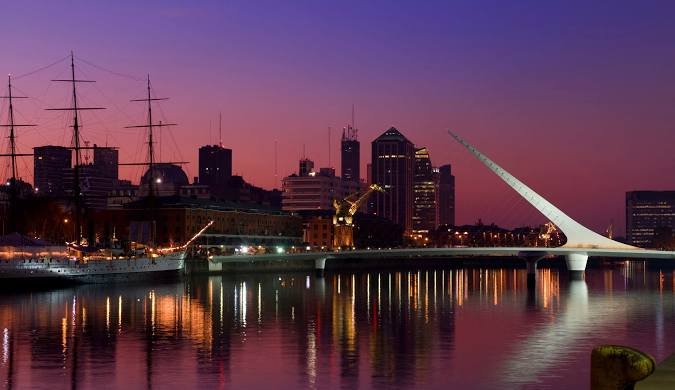
Argentina is a land of poetic landscapes and emotional intensity. From sultry tango halls to glacier-carved valleys, it offers an unparalleled blend of elegance, wildness, and spirit. Whether you’re sipping Malbec in the shadow of the Andes or strolling the boulevards of Buenos Aires, you’ll understand why Argentina is one of the top countries to visit in South America.
Buenos Aires’ Elegant Charm
Often called the “Paris of South America,” Buenos Aires is a city of broad avenues, belle époque architecture, and deep-rooted passions. At its heart lies the rhythm of tango—a dance of longing and intensity that spills into every corner of the city. Neighborhoods like San Telmo and La Boca reflect this cultural soul through vibrant murals, cobbled streets, and the pulse of live music.
Whether you’re catching a performance in a grand theater or a humble milonga, the city’s romanticism is infectious. Pair it with local cuisine—succulent steaks, empanadas, and red wine—and Buenos Aires becomes a compelling introduction to one of the top countries to visit in South America.
Patagonia’s Majestic Glaciers
The southern wilderness of Patagonia is one of Argentina’s crown jewels—a frontier of raw natural power and solitude. Dominated by jagged peaks, turquoise lakes, and windswept plains, it draws adventurers and dreamers alike. The Perito Moreno Glacier, located in Los Glaciares National Park, is one of the world’s few advancing glaciers and a spectacle of towering ice crashing into the lake below.
Trekking in Patagonia isn’t just about the landscapes—it’s about scale and silence. Whether hiking in El Chaltén or sailing through the glacial channels of the south, the immensity of nature is humbling. This wild region alone solidifies Argentina’s place among the top countries to visit in South America.
Mendoza’s Wine Country
At the foothills of the Andes lies Mendoza, Argentina’s premier wine-producing region and a haven for oenophiles. With its high-altitude vineyards, abundant sunshine, and pure mountain water, Mendoza produces some of the finest Malbec wines in the world.
Wine tours through the Uco Valley and Luján de Cuyo offer more than tastings—they provide intimate experiences with family-run bodegas and gourmet pairings with local flavors. For those who appreciate slower travel steeped in flavor and tradition, Mendoza adds a refined layer to Argentina’s appeal as one of the top countries to visit in South America.
7. Chile: From Desert to Glaciers
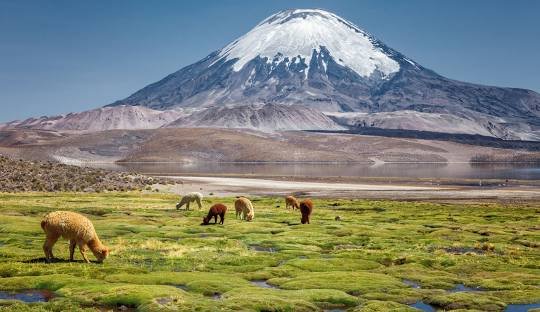
Chile stretches like a ribbon along the western edge of South America, spanning more than 4,000 kilometers from the arid north to the icy south. Its extreme diversity makes it one of the most geographically varied—and visually striking—destinations on the continent. With desert moonscapes, bustling cities, and epic national parks, Chile secures its place among the top countries to visit in South America.
The Atacama Desert’s Stark Beauty
In Chile’s north lies the Atacama Desert, the driest non-polar desert on Earth. Its stark beauty feels extraterrestrial—salt flats shimmer in the sun, flamingos stalk mineral-rich lagoons, and geysers hiss beneath a canopy of stars. The Valle de la Luna (Valley of the Moon) lives up to its name with surreal, sculpted terrain that glows orange and pink at dusk.
What makes the Atacama truly unique is its night sky. With virtually no light pollution, the region is one of the best places on Earth for stargazing. Observatories draw astronomers from around the world, while guided tours offer unforgettable views of the Milky Way. It’s this celestial magic that elevates Chile among the top countries to visit in South America for nature lovers and dreamers alike.
Santiago’s Modern Metropolis
At the center of the country lies Santiago, a sophisticated capital city nestled between the Andes and coastal ranges. It’s a place where sleek glass towers rise beside neoclassical cathedrals, and where art galleries and gourmet restaurants thrive just blocks from bustling local markets.
Climb Cerro San Cristóbal for sweeping views of the city framed by snowcapped peaks. Explore Barrio Bellavista for its bohemian flair, vibrant street art, and the former home of poet Pablo Neruda. Santiago’s blend of old and new, calm and chaos, shows why Chile continues to be one of the top countries to visit in South America for urban explorers and culture seekers.
Torres del Paine’s Dramatic Peaks
In the south, Torres del Paine National Park is one of the most spectacular landscapes in the Southern Hemisphere. Here, wind-sculpted mountains, azure lakes, glaciers, and grasslands form a pristine wilderness that feels untouched by time. The park’s namesake towers—Los Torres—rise dramatically above the landscape, drawing hikers from around the globe.
Treks like the W Circuit and O Circuit offer multi-day immersion in nature at its most breathtaking, while shorter hikes and scenic drives make the park accessible to all. Wildlife like guanacos, condors, and elusive pumas roam freely. For adventurers and photographers alike, Torres del Paine is a defining reason why Chile remains firmly among the top countries to visit in South America.
Conclusion
From the emerald jungles of the Amazon to the glacial spires of Patagonia, South America is a continent that stirs the soul and challenges the senses. Each of the seven destinations highlighted in this guide brings something utterly unique to the table—yet all share a common thread: authenticity, depth, and the power to transform your perspective on the world.
Whether you’re drawn by Colombia’s cultural heartbeat, Ecuador’s ecological diversity, Peru’s ancient wonders, Bolivia’s surreal highlands, Brazil’s boundless energy, Argentina’s passion and landscapes, or Chile’s awe-inspiring geography, this continent never runs short of marvels. It’s no wonder these are the top countries to visit in South America—places where memories are made not just through sightseeing, but through deep, meaningful immersion.
South America is not a single experience—it’s a collection of endless stories waiting to be lived. And for those who seek more than just postcards, for those who travel to connect, discover, and feel—the journey starts here.
FAQ: Top Countries to Visit in South America
1. What is the best time of year to visit South America?
South America’s diverse geography means there’s no one-size-fits-all answer. For Patagonia (Argentina and Chile), the best time is during the Southern Hemisphere’s summer—December to March. The Amazon and Galápagos are great year-round but drier and more accessible from June to September. For cultural city travel, shoulder seasons like April–May and September–November offer mild weather and fewer crowds.
2. Is it safe to travel to the top countries in South America?
Yes, but like anywhere, safety varies by region. Major tourist destinations in countries like Peru, Colombia, and Brazil are generally safe with proper precautions. Avoid isolated areas at night, be cautious with valuables, and use reputable transportation. Staying informed and aware of local conditions ensures a safe and enjoyable experience.
3. Do I need a visa to visit South America?
Visa requirements depend on your nationality and the country you’re visiting. U.S., Canadian, EU, and Australian travelers can enter many South American countries visa-free for tourism, typically up to 90 days. Always check current entry requirements with each country’s embassy or consulate before your trip.
4. What languages are spoken in these countries?
Spanish is the dominant language across most of South America. The exception is Brazil, where Portuguese is spoken. In tourist areas, English is often understood, but learning a few Spanish or Portuguese phrases will greatly enhance your travel experience.
5. How do I travel between countries in South America?
South America has a well-connected network of buses and domestic flights. For long distances or hard-to-reach places, low-cost airlines like LATAM, Avianca, and Sky Airline offer frequent service. Overland travel is more scenic and budget-friendly, but flying can save significant time.
6. Which country should I visit first?
It depends on your interests. For cultural richness and history, Peru is a strong start. For natural beauty and outdoor adventures, Chile or Argentina are unbeatable. If you’re looking for a bit of everything—vibrant cities, beaches, coffee, and mountain landscapes—Colombia offers a well-rounded introduction to South America.

